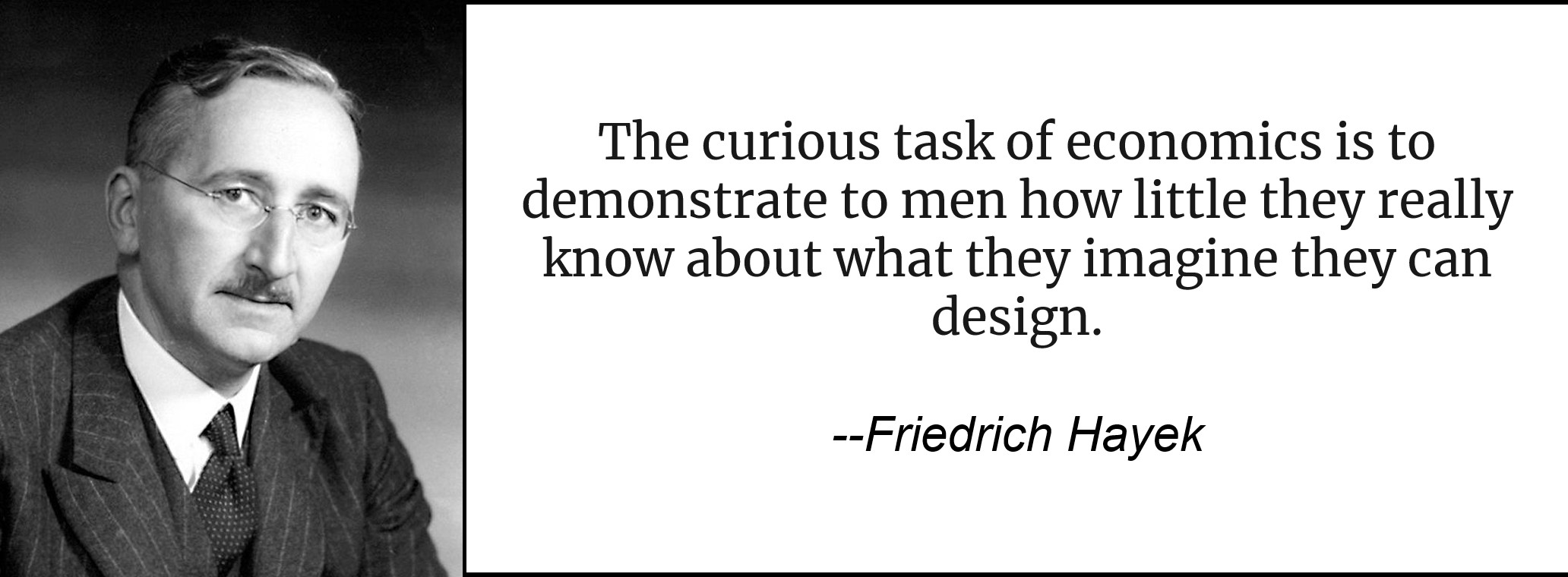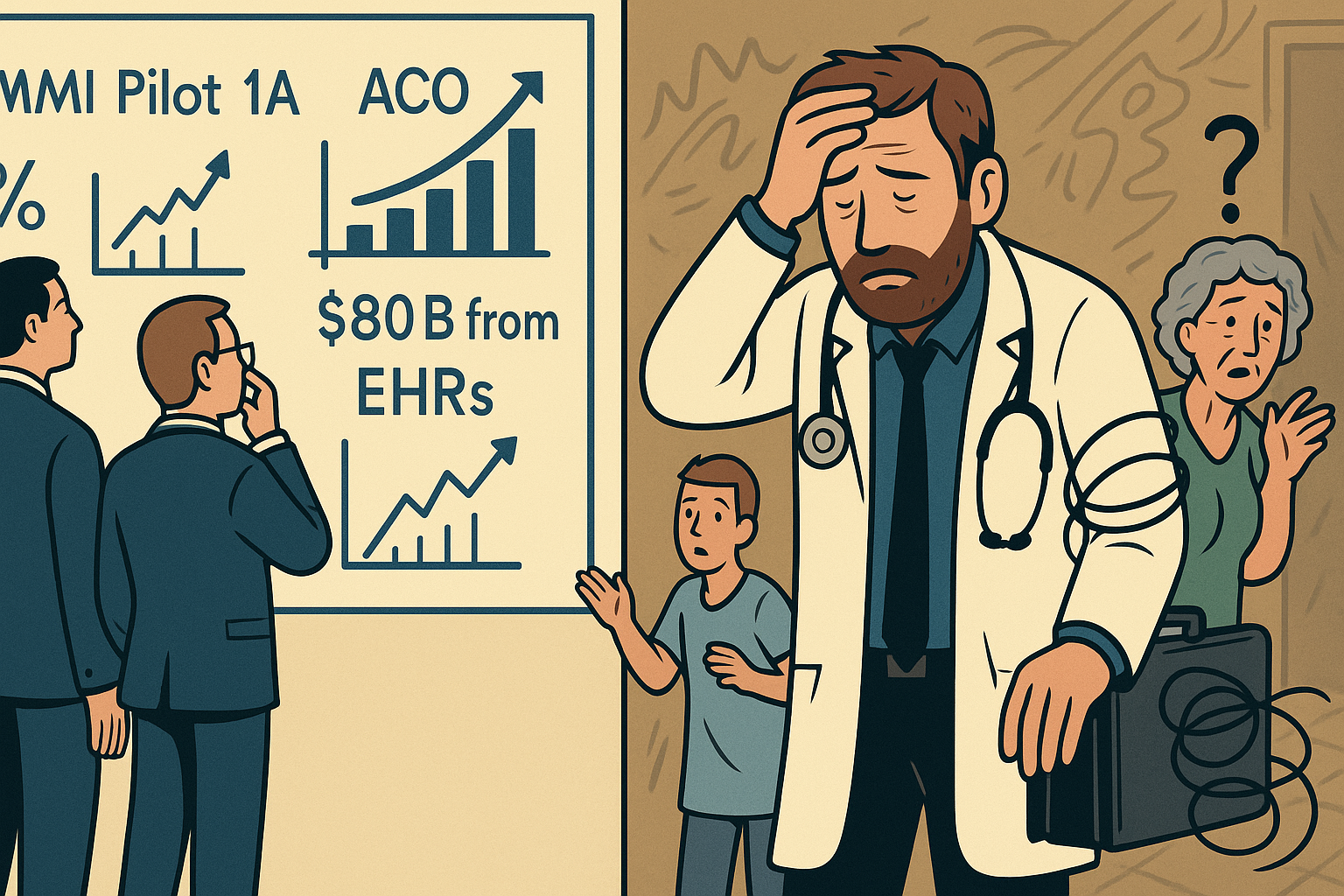Back in September, I evaluated the performance of the Affordable Care Act (ACA) with regard to some of the prevailing major problems in healthcare. In this review, I considered the rate of uninsured Americans, the affordability of healthcare, and average life expectancy. These were all issues being discussed up to that point and were used to advocate for its passage. The only goal it even partially achieved was reducing the uninsurance rate, which it did entirely by simply expanding Medicaid.
Since then, experts have shown that some of the healthcare reform's less high-profile objectives have failed as well. Below, I go through three other elements of the ACA—Accountable Care Organizations, Electronic Health Records, and the Center for Medicare and Medicaid Innovation. For each, I highlight the lofty promises made at the time and compare to real-world results.
Looking at the ACA in its entirety, all the projects it entailed and the outcomes it was supposed to effect, one's conclusion should not be that "government always fails" or that "we can do it better next time", but that societal engineering through government policy is much more difficult than we imagine.

Looking at the ACA in its entirety, and all the projects it entailed, and all the outcomes those projects were supposed to effect, one's conclusion should not be that "government always fails" or that "we can do it better next time", but that societal engineering through government policy is much more difficult than we imagine.
Accountable Care Organizations (ACOs)
The Promise
Accountable Care Organizations were a novel approach to providing care to patients. Instead of patients going from one doctor to an unrelated hospital to an unrelated lab and being responsible for managing their own care, hospitals, doctors, nurses, and other specialists would join together into an ACO and coordinate care for the patients. These ACOs were paid according to their performance. If they increased value, they'd receive a bonus, but if they underperformed, they might be financially penalized.
When the Affordable Care Act introduced Accountable Care Organizations, policy experts and media outlets lauded them as a revolutionary approach to improve care coordination and cut costs. They were touted as the forefront of the shift of healthcare from being an industry focused on volume to one focused on value. In early 2011, an NPR/Kaiser Health News explainer noted ACOs had become “one of the most talked about provisions” of the new law, offering a “possibly less costly model” of care that keeps quality high while tamping down expenses.
Accountable care organizations take up only seven pages of the massive new health law yet have become one of the most talked about provisions.
The policy commentariat argued ACOs would break down the silos in health care. Instead of fragmented treatment, patients would get “seamless” care as providers work together. By holding a single organization responsible “across a continuum of care,” ACOs were intended to reduce the errors, duplication, and frustration that patients faced under disjointed care.
The Reality
In a recent, Health Affairs Article, authors dug into the performance of ACOs. They discovered that, contrary to promises and announcements to the contrary, ACOs produced no real savings and sometimes, on net, were more costly than non-ACO provision of healthcare.
CMS reported MSSP savings create the veneer of savings when little to none exist.
ACOs are basically behaving the same way Medicare Advantage plans are. When determining their payments, CMS compares their performance to an artificial and inflated benchmark. This creates an accounting illusion where they appear to be producing net gains when they're not. They achieve this by exploiting favorable selection, upcoding, and other means which, while legal, defy the spirit of the system it's abusing.
Among the ways they manipulate the program, ACOs can drop out and re-enter the pay-for-performance system at will. Because the performance system rewards improvement and punishes failure, ACOs can time their participation so it's all upside and no downside. ACOs can also select which practices are evaluated, so if they select the ones that are improving and exclude those that are underperforming, they can improve their own scores.
ACOs were supposed to drive the healthcare system to be more value-based, reducing cost and improving outcomes, but the actual result is an additional layer of complication that some enterprising people have engineered a way to game without producing any results. Upon hearing this, the natural impulse will be to keep the underlying system and address the errors that have been identified so far. That impulse should be resisted.
A group of system designers cannot be as smart as the thousands of participants who will be looking for ways to make the system work for them.
The Commonwealth report identified several potential pitfalls of the ACO endeavor. Notably, gaming the system was not listed. In a complex system, the methods of failure are rarely foreseeable, and for every hurdle identified, there are myriad more that can occur. A group of system designers cannot be as smart as the thousands of participants who will be looking for ways to make the system work for them.
Electronic Health Records (EHR)
The Promise
The push for electronic health records was heralded as a cornerstone of modernizing health care during the ACA era. Prominent advocates from the White House to health IT experts argued that digitizing medical records would save money, save lives, and improve care. For example, in early 2009 soon-to-be-President Obama announced a major health IT initiative, declaring “within five years, all of America’s medical records are computerized. This will cut waste, eliminate red tape and reduce the need to repeat expensive medical tests… it…will save lives by reducing the deadly but preventable medical errors.”
Advocates predicted EHRs would eliminate costly inefficiencies – reducing paperwork, duplicate tests, and administrative overhead. Obama’s team argued digitization would “cut waste” and save billions in unnecessary spending. A widely cited RAND analysis from 2005 even projected over $80 billion in annual savings if EHRs were broadly adopted. The prevailing message was that going electronic would streamline care delivery and bend the cost curve downward.
The Reality
Suffice it to say, we do not live in the high-tech paradise that many envisioned. The healthcare system is not markedly different from fifteen years ago. Physicians have been bogged down with additional administrative burdens.
Instead of solving the problems of paper records, EHRs have simply digitized them—and created new problems along the way.
In addition to the administrative burden, studies have found the adoption of EHRs has "decreased patient-provider interaction, security breaches, and overdependence on technology". Instead of improving healthcare, providers used the data to increase revenues by performing additional procedures and by reducing patient visits. Experts say that EHRs fail to enable practitioners to convert their practice's clinical information into productive actions.
Like with ACOs, EHRs were a promise that has gone unfulfilled. Several problems were not foreseen. Startup costs were significantly higher than anyone predicted, and while EHRs increased information transfer within organizations, the systems put in place were often tailored to individual providers, so external transfer has not been improved. Also, there are two major providers of EHR systems and they have an incentive to not be cross-compatible. Lastly, while EHRs enable healthcare providers to communicate more easily, they also facilitate data analysis for providers to increase their revenues through upcoding (see above) and other means.
Centers for Medicare and Medicaid Innovation (CMMI)
The Promise
Policymakers and wonks portrayed CMMI as the engine that would test and scale up the best ideas to achieve healthcare's Triple Aim. The law charged the new Innovation Center with finding ways to “improve healthcare quality and reduce costs” in Medicare and Medicaid. Upon its launch, officials made lofty promises about its potential. CMS Administrator Donald Berwick touted that “The Innovation Center will [identify] models of care that both improve the quality of care patients receive and lower costs.”
Commentary stressed that CMMI would rapidly experiment with novel payment and care delivery models – from bundled payments for episodes of care, to medical homes, to preventive health initiatives. The goal was to find “what works” in improving outcomes and efficiency.
This was heralded as an unprecedented opportunity to innovate in real time. Think tanks like the Center for American Progress cheered it, avowing that alternative payment methods under CMMI are “key to transforming how we deliver care, to lowering costs, and to improving quality.”
The Reality
In a 2023 CBO Analysis, economists determined that between 2011 and 2020, CMMI increased total costs by $5.4 billion. It spent $7.9 billion in order to save $2.6 billion—a result entirely at odds with the program's intent. The Center, designed to innovate its way to reduced spending, ended up costing more than it saved. Avalere Health conducted their own evaluation, reviewing a sample of projects and found that they produced a net loss of $6.4 billion. In theory, the models Avalere reviewed would pioneer a shift to more value-based care. In practice, most were abandoned after lackluster results.
Now, that's not a huge amount of money in the context of the U.S. budget, or even CMS spending, but CBO originally projected it would save $1.3 billion on net over ten years. CMMI was supposed to be a policy engine— a platform that could test, learn, and scale. Instead it became yet another regulatory cog in the wheel of government. It doesn't produce anything of value, but it still keeps spinning.
CMMI proves once again how difficult it is to engineer grand results and also that the difficulties are persistently underestimated. Time has shown that it is counterproductive and should be dropped.
Conclusion
The ACA provides numerous examples of how advocates of government-led solutions to complex problems are overly optimistic. Medicaid expansion is its only accomplishment that can be deemed even a partial success, and its success is entirely attributable to it being a simple expansion of spending on an existing product. Despite an attempt to produce larger benefits through smart regulation and technocracy, the only reason the ACA succeeded in any endeavor is because it threw money at a problem. The healthcare system is no different than it was 20 years ago. It's not more affordable, more efficient, or more value-based. It's the exact same system just with more government money and intervention.
Time and again, well-intentioned, government-inclined disrupters propose new programs and considerable spending with the promise and prediction that it will improve the systems that are broken or save taxpayers money. In the majority of cases, these promises fail to materialize, the public forgets that they were made, and we end up stuck with programs that make the system more complex without any improvement in outcomes. Looking forward, we should end-of-life the failed experiments and redouble our skepticism of future projects and their overpromises.

